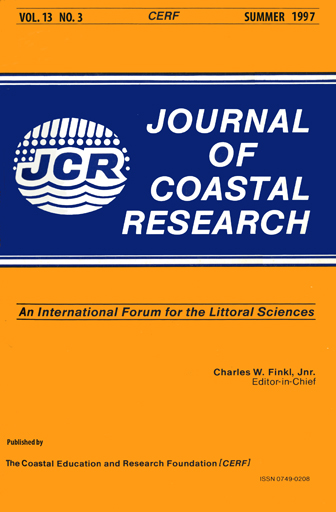Relationships between Salt Marsh Loss and Dredged
Keywords:
Wetland loss, dredging impacts, mitigation, coastal managementAbstract
Coastal land loss rates were quantified for 27 salt marshes in three estuaries of the Louisiana Mississippi Deltaic plain: Barataria, Terrebonne and St. Bernard. The sites ranged from 23 ha to 908 ha and the total area of all sites was 6.367 ha. Two methods were used to calculate open water and canal density in each of five years: (1) a Geographic Information System for 1956 and 1978, and, (2) a point grid method for 1974, 1988, and 1990.
A General Linear Model explained 79% of the variance (R2 = 0.79; P≥ 0.95) among basins for all years and provided an estimate of the impacts of canals in each basin. The land loss rates, virtually all occurring as wetland to open water conversions, were different in each basin. The 'background' land loss rates from 1956 to 1990 (exclusive of the direct or indirect effects of canals; %/yr: µ ± 1 Std. Dev.) for each basin were estimated to be: Barataria: 0.71 ± 0.12. Terrebonne 0.47 ± 0.09, and St. Bernard 0.08 ± 0.14. Canals were equally and directly correlated with landloss in each basin. There was 2.85 ha of open water formed with each ha of canal dredged (inclusive of the canal area) and an additional 1 ha wetland converted to spoil bank vegetation. Additional losses may occur if loss rates continue for periods longer than the mapping intervals. There are documented causal mechanisms involving wet land hydrologic changes that can explain these wetland losses.


